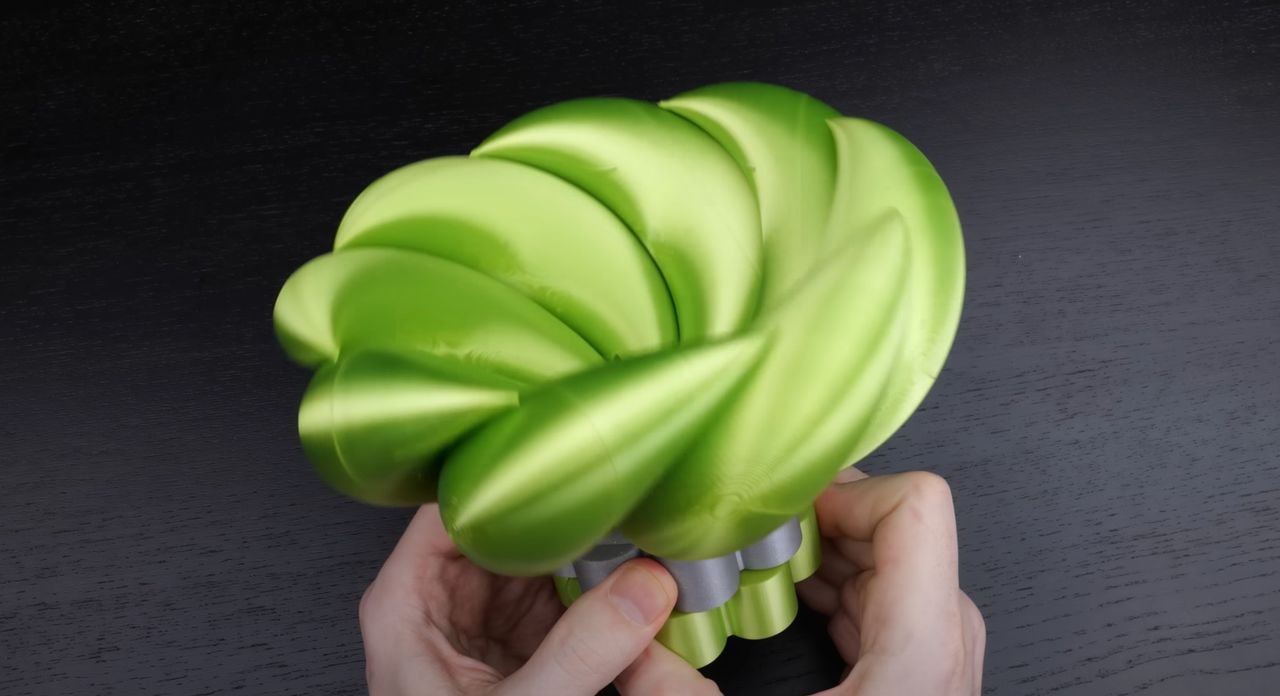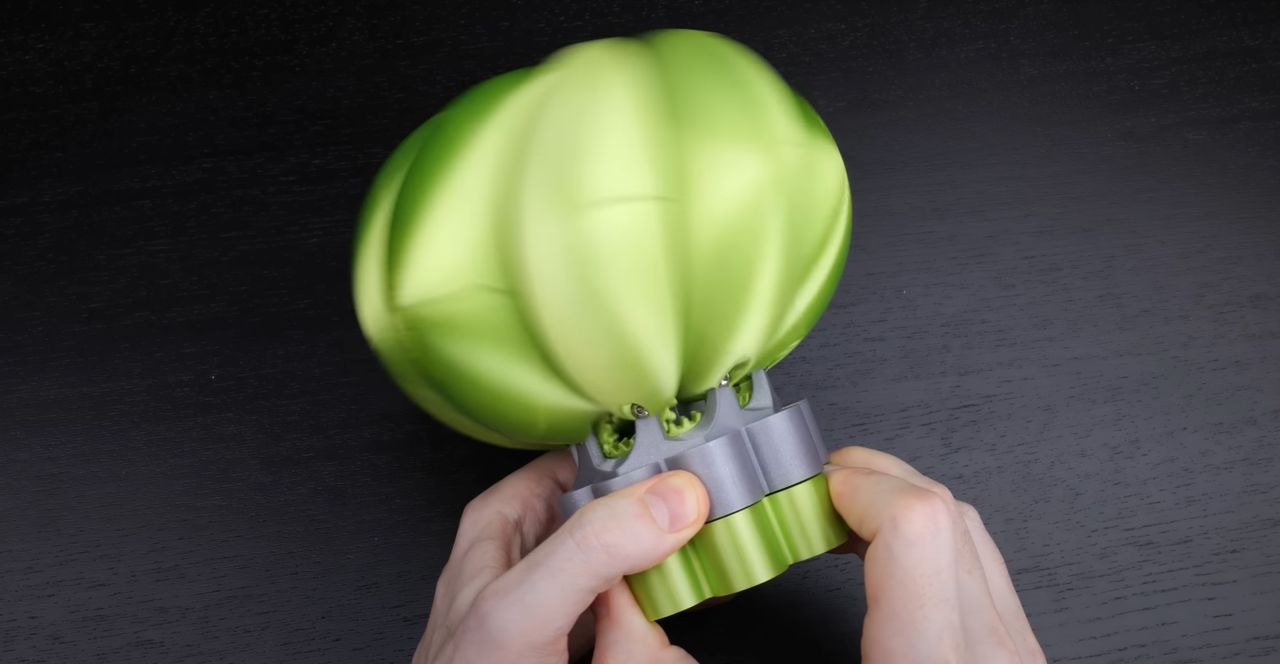
This week’s selection is the Slide Glide Cyclides by mathematician Henry Segerman.
Segerman is an associate professor mathematics at Oklahoma State University, and is often seen online with curious 3D designs. In fact, he’s made our Design of the Week pages no less than three times.
This will be his fourth.
This highly unusual 3D model is based on mathematics and geometry, as one would expect from Segerman. It’s based on the curious cyclide shape, which is defined in Wikipedia as:
“A Dupin cyclide or cyclide of Dupin is any geometric inversion of a standard torus, cylinder or double cone.”
Visually, it’s a banana-like crescent with smooth curves.

The slide glide is a set of such shapes organized around a gearing mechanism. The mechanism, when activated through rotation, swiftly lifts up (or lowers) the cyclides to form a disk (or folds it up).
Segerman explains the design:
“This design is made out of shapes called cyclides. In this mechanism the cyclides rotate against each other, opening out while staying in contact so that the overall shape transforms from a sphere to a disk.
This design was discovered by Andrew Kepert when investigating ways to “see” why the area of a sphere is four times the area of a disk of the same radius. I added the gears and the base.
The cyclides (eight of them) are printed in two parts that are superglued together (with little pegs to slot in for alignment). This minimizes the amount of overhang when printing, but the print will still need support around the gear teeth.”
There is some minor hardware required to complete this project, namely certain nuts and bolts.
Surprisingly, there are only eleven 3D printed parts required, plus the hardware.
Segerman has graciously provided the entire STL and instructions online for free download at Printables.
Via YouTube and Printables
